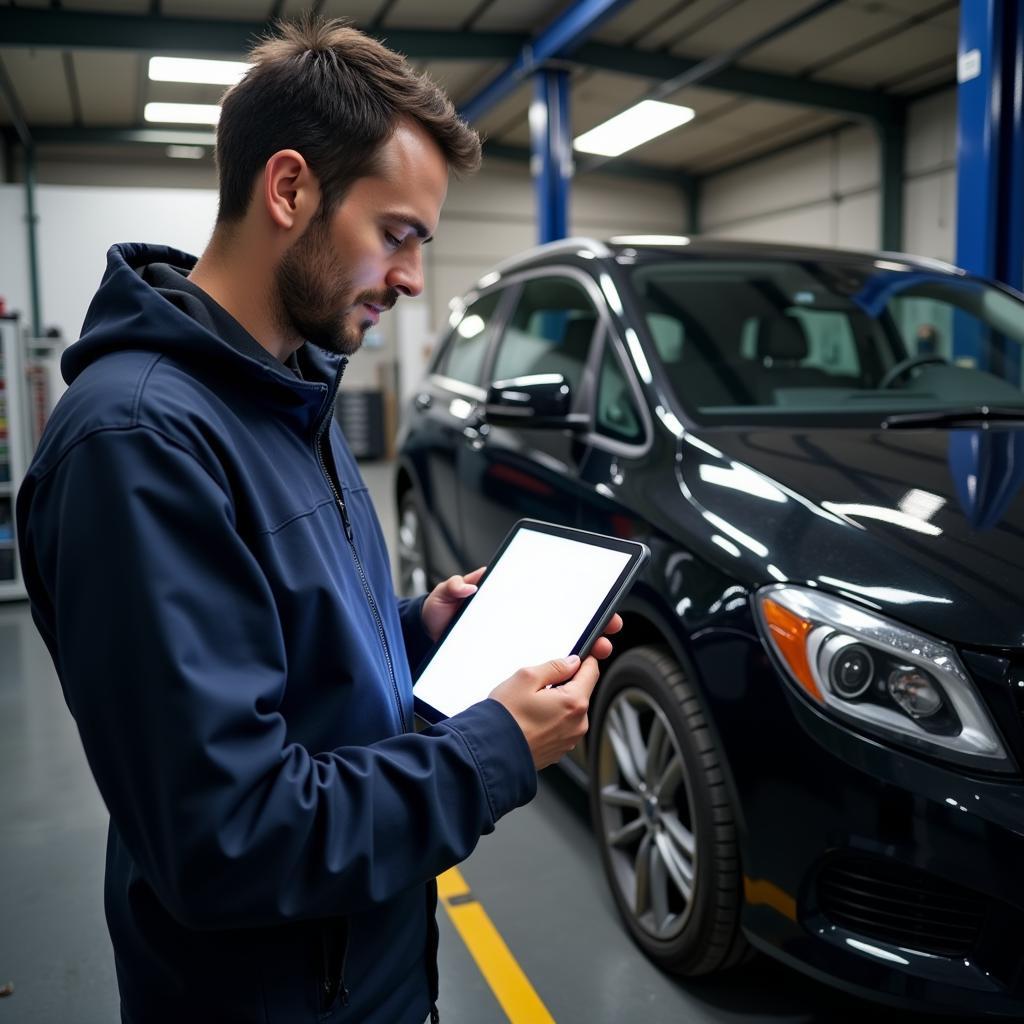Computerised Car Diagnostic is now an essential part of vehicle maintenance and repair. Gone are the days of relying solely on mechanics’ intuition and experience to diagnose car problems. Today, sophisticated software and hardware work together to pinpoint issues with incredible accuracy.
 Computerised Car Diagnostic Tools
Computerised Car Diagnostic Tools
Why Computerised Car Diagnostics Are Essential
Modern vehicles are complex machines with intricate electronic systems. Computerised car diagnostic tools, also known as OBD2 scanners, interface with your vehicle’s onboard computer to retrieve valuable data. This data, ranging from engine RPM to emissions levels, provides a detailed picture of your car’s health.
Here’s why this technology is revolutionary:
- Accurate Diagnosis: Computerised systems eliminate much of the guesswork traditionally involved in car repair.
- Early Detection: These tools can identify issues in their early stages, often before they become major problems.
- Cost-Effective Repairs: By accurately diagnosing the issue, you avoid unnecessary repairs and save money in the long run.
- Improved Safety: Addressing minor issues promptly through early detection contributes significantly to safer driving.
Understanding Different Types of Computerised Car Diagnostic Tools
There is a wide range of car diagnostic tools available, from basic code readers to professional-grade systems used in workshops. Here’s a brief overview:
1. OBD2 Code Readers
These are entry-level devices designed to read and clear basic diagnostic trouble codes (DTCs). They are affordable and easy to use, making them ideal for car owners who want to perform basic diagnostics themselves.
 OBD2 Code Reader in Action
OBD2 Code Reader in Action
2. Advanced OBD2 Scanners
These tools offer more features than basic code readers, including live data streaming, graphing capabilities, and access to manufacturer-specific codes. They are suitable for DIY enthusiasts and small workshops.
3. Professional Diagnostic Scanners
These high-end tools are typically used by dealerships and professional mechanics. They provide comprehensive diagnostic capabilities, including bi-directional control, programming functions, and access to a vast database of technical information.
computerised car diagnostic machine
How Computerised Car Diagnostic Works
The process is surprisingly straightforward:
- Connection: The diagnostic tool connects to your car’s OBD2 port, usually located under the dashboard on the driver’s side.
- Data Retrieval: The tool communicates with your car’s computer and retrieves diagnostic trouble codes (DTCs) and live data from various sensors.
- Analysis: The tool or accompanying software interprets the data, providing insights into the potential cause of the problem.
Common Uses of Computerised Car Diagnostic
The applications of this technology are extensive and include:
- Engine Diagnostics: Identifying issues with fuel systems, ignition, emissions, and more.
- Transmission Problems: Diagnosing problems with automatic or manual transmissions.
- ABS and Airbag Systems: Troubleshooting issues with anti-lock brake systems and airbag control modules.
- Electronic Systems: Diagnosing problems with power windows, door locks, and other electronic components.
The Future of Computerised Car Diagnostic
The evolution of car diagnostic technology is moving at a rapid pace. Here are some key trends:
- Wireless Connectivity: More diagnostic tools are becoming wireless, allowing for easier and more flexible use.
- Cloud-Based Platforms: Data storage and analysis are shifting towards cloud-based platforms, providing access to vast amounts of information.
- Artificial Intelligence (AI): AI-powered diagnostic tools are emerging, offering faster and more accurate diagnoses through predictive analysis.
 Mechanic using wireless diagnostic tablet
Mechanic using wireless diagnostic tablet
Expert Insight
“Computerised car diagnostics are no longer a luxury but a necessity. They have transformed the way we diagnose and repair vehicles, saving time and money while improving safety.” – David Miller, Senior Automotive Engineer
Conclusion
Computerised car diagnostic has revolutionized the automotive industry. Whether you’re a car owner looking for basic diagnostics or a professional mechanic needing advanced capabilities, understanding and utilizing this technology is crucial for effective car maintenance and repair. Embracing these tools ensures you stay ahead of potential problems, keep your car running smoothly, and prioritize safety on the road.
FAQs
1. How often should I get a computerised car diagnostic?
It’s generally recommended to have your car diagnosed at least once a year or whenever you experience unusual performance issues.
2. Can I use a computerised diagnostic tool on any car?
Most cars manufactured after 1996 are equipped with an OBD2 port, making them compatible with OBD2 scanners.
3. Are there any risks associated with using a computerised car diagnostic tool?
Using a reputable tool correctly poses minimal risk. However, improper use or attempting complex repairs without proper knowledge can potentially cause damage.
4. Can a computerised car diagnostic tool tell me when my car needs an oil change?
While some advanced tools offer maintenance reminders, it’s always best to consult your owner’s manual for recommended service intervals.
5. Can I buy a computerised car diagnostic tool for home use?
Yes, there are many affordable and user-friendly options available for car owners who want to perform basic diagnostics themselves.
For further information and support, contact our expert team via WhatsApp at +1(641)206-8880 or email us at [email protected]. We offer 24/7 customer service to assist with all your car diagnostic needs.

Leave a Reply